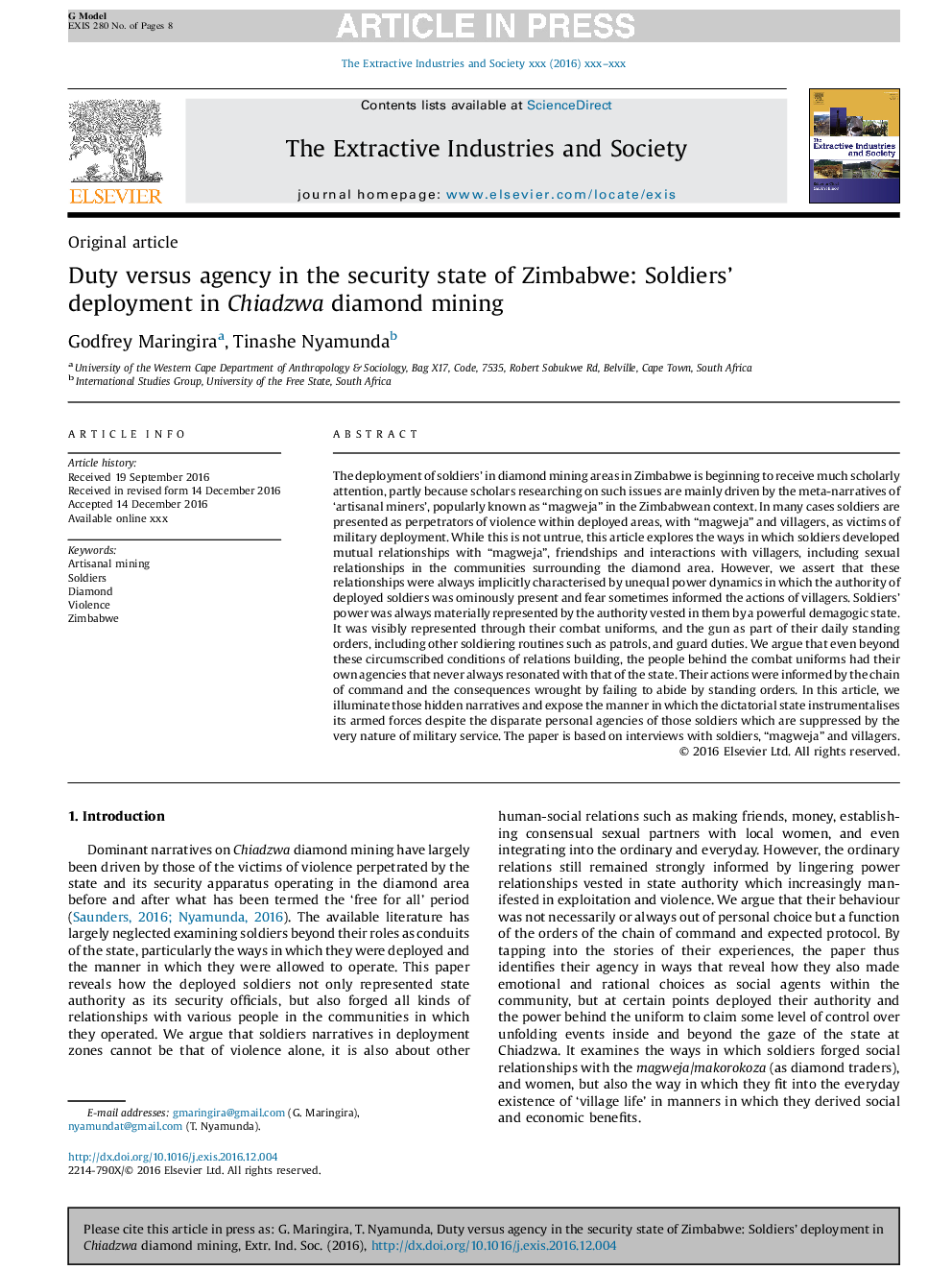| Article ID | Journal | Published Year | Pages | File Type |
|---|---|---|---|---|
| 5114459 | The Extractive Industries and Society | 2017 | 8 Pages |
Abstract
The deployment of soldiers' in diamond mining areas in Zimbabwe is beginning to receive much scholarly attention, partly because scholars researching on such issues are mainly driven by the meta-narratives of 'artisanal miners', popularly known as “magweja” in the Zimbabwean context. In many cases soldiers are presented as perpetrators of violence within deployed areas, with “magweja” and villagers, as victims of military deployment. While this is not untrue, this article explores the ways in which soldiers developed mutual relationships with “magweja”, friendships and interactions with villagers, including sexual relationships in the communities surrounding the diamond area. However, we assert that these relationships were always implicitly characterised by unequal power dynamics in which the authority of deployed soldiers was ominously present and fear sometimes informed the actions of villagers. Soldiers' power was always materially represented by the authority vested in them by a powerful demagogic state. It was visibly represented through their combat uniforms, and the gun as part of their daily standing orders, including other soldiering routines such as patrols, and guard duties. We argue that even beyond these circumscribed conditions of relations building, the people behind the combat uniforms had their own agencies that never always resonated with that of the state. Their actions were informed by the chain of command and the consequences wrought by failing to abide by standing orders. In this article, we illuminate those hidden narratives and expose the manner in which the dictatorial state instrumentalises its armed forces despite the disparate personal agencies of those soldiers which are suppressed by the very nature of military service. The paper is based on interviews with soldiers, “magweja” and villagers.
Related Topics
Life Sciences
Environmental Science
Management, Monitoring, Policy and Law
Authors
Godfrey Maringira, Tinashe Nyamunda,
